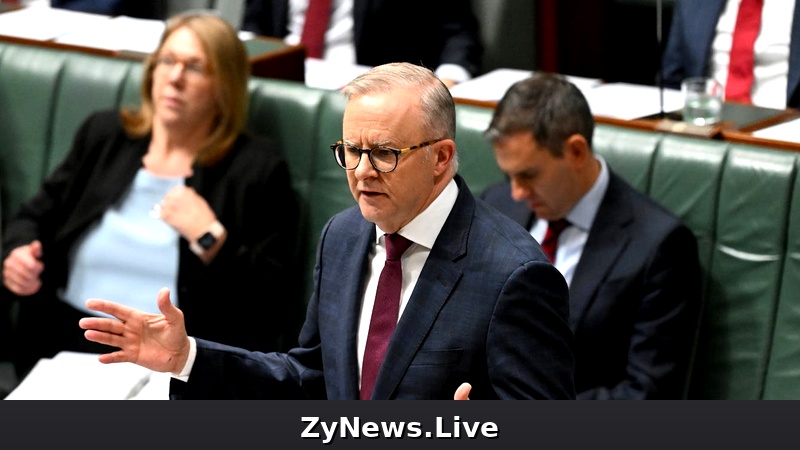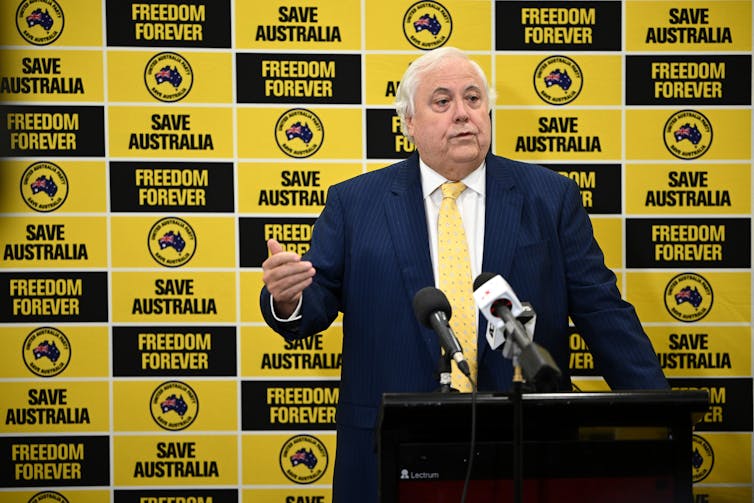Political finance law reforms will reduce big money in politics, but will rich donors be the ultimate winners?

Political funding in Australia has long been shrouded in secrecy. It is also dominated by large donations and unrestrained spending, courtesy of laissez-faire federal political finance laws.
The Albanese government has proposed the Electoral Legislation Amendment (Electoral Reform) Bill. According to the government, the bill “seek(s) to remove the influence of big money in politics”. The Teal MPs and Clive Palmer have, however, denounced it as “a major party stich-up”.
Where does the truth lie?
The bill will reduce the influence of big money in politics, but it does not go far enough in curbing large donations and excessive spending. Its scorecard on promoting fair elections is mixed: it will make elections fairer in key respects, but also unduly favour the major parties, political parties with wealthy candidates, and those with investment income.
## A wholesale reform
The bill proposes significant changes to the two pillars of current federal laws (disclosure and public funding), while adding another two (caps on gifts and caps on electoral expenditure). This is the most ambitious reform of federal political finance laws attempted since the current regime was established four decades ago.
Substantial “hidden money” has resulted from the weaknesses of current laws. These include a high disclosure threshold, a lack of timeliness, and weak penalties.
The bill provides a comprehensive response to these weaknesses by:
• reducing the disclosure threshold to $1,000
• requiring expedited disclosure
• providing penalties based on the amounts not disclosed.
## Risk of corruption is reduced, but there are significant loopholes
A small minority of large donors dominate the funding of federal political parties and candidates.
Leading the pack are cashed-up individuals such as Richard Pratt, Clive Palmer and Rob Keldoulis (the main funder of Climate 200).
Specific industries (including the mining and resource sector, the property sector, and the gambling sector), regularly make substantial donations and mainly to the major parties – money follows power.
All this illustrates what the High Court has described as “clientelism” corruption. This means corruption that
arises from an office-holder’s dependence on the financial support of a wealthy patron to a degree that is apt to compromise the expectation, fundamental to representative democracy, that public power will be exercised in the public interest.
The bill tackles such corruption through all four pillars. Robust disclosure will aid through “sunlight as disinfectant”. A ceiling on spending through expenditure caps will reduce the pressure to fundraise. An increase in public funding for campaigns has a similar effect.
Gift caps are the principal way in which the bill seeks to prevent large donations. The million-dollar donations made by Pratt, Keldoulis and mining companies would be illegal under these caps, which limit donations to each political party to $20,000 a year.
However, these caps also have major loopholes. Exclusions from the caps allow for disguised donations: membership and affiliation fees to associated entities are not caught by the caps. While there is a principled basis for exempting membership and affiliation fees to political parties (including trade union affiliation fees), the bill allows for inflation of these fees by leaving the exemptions uncapped (unlike NSW laws).
Most significantly, the caps do not apply to donations made by candidates to the party that endorsed them. They would not, for example, prevent Clive Palmer from continuing to donate millions to the United Australia Party. They would also not prohibit donations such as the $1.75 million Malcolm Turnbull gave to the Liberal Party in 2016–17.

## The ‘arms race’ is contained but big spending will continue
The past two decades have seen a steady rise in federal election spending. This has been driven by major party spending and big spending contests such as Kooyong (where both Monique Ryan and Josh Frydenberg spent around $2 million each).
The problem here is twofold: high spending increases fundraising pressure and the risk of corruption associated with large donations; and high spending itself undermines fairness of elections. The High Court has referred to “war-chest” corruption where “the power of money may also pose a threat to the electoral process itself”.
The bill’s federal cap of $90 million will reduce levels of spending (the Coalition, United Australia and Labor each spent more than $100 million in the last election) and prevent further increases.
Nevertheless, the cap is set too high. Analysis by the Centre for Public Integrity shows the federal cap is disproportionately high compared to the state caps. For example, it will allow more than double a maximum spend per elector compared to the New South Wales cap on spending.
The $11.25 million cap on third-party spending shares the same weakness. While this high level was presumably adopted to lessen the prospect of a successful constitutional challenge to the cap (as occurred with the NSW cap), the scale has been tilted too far.
As it stands, the third-party cap will not prevent campaigns such as the $22 million advertising campaign by mining companies against the Rudd government’s resource super-profits tax, which contributed to the ousting of Kevin Rudd as prime minister.
## Caps promote fairness but some still get a free pass
Gift caps promote fair elections by reducing the need for large donations in order for candidates to run a meaningful campaign. They also level the playing field by reducing the spending advantage of the better-resourced parties and candidates.
In both cases, candidates such as the Teals, who rely on large donations and high spending, will clearly be constrained. But it is the major parties that will be most affected (disadvantaged), as they are the main beneficiaries of the laissez-faire status quo (together with Palmer’s United Australia Party).
On the negative side, the loophole with candidate donations will favour parties with wealthy candidates. Parties will also be able to register their investment vehicles as “nominated entities” and receive income outside of the gift caps, a boon for the major parties and probably Palmer’s UAP.
Major parties further benefit from the narrow scope of Division and Senate caps which leave out considerable party spending directed at these contests. Broadening their scope along the lines of [Canadian] and UK spending limits will help address the Teals’ concern that spending caps allow the major parties to game the caps by shifting spending from safe and unwinnable seats to marginal ones.
## Public funding can be fairer
The bill seeks to increase public funding based on first preference votes (election funding) and the number of seats (administrative assistance funding). This is a measure for fairness: together with gift caps, it means funding is increasingly determined by the level of popular support rather than the ability to attract large donations.
The major parties will receive substantial increases in public funding due to their share of votes and seats. But this is not a credible argument that such funding is “biased”.
However, as funding criteria are based on the outcomes of the past election, public funding does favour incumbents. This could can be offset by a start-up fund for new parties and candidates (such as the New South Wales’ New Parties Fund).
The government should be congratulated for grasping the nettle of reform in an area where disagreement and self interest run deep. It should now follow through with a proper parliamentary process – including a parliamentary inquiry with adequate time for scrutiny. Otherwise, it may miss the opportunity for enduring change.